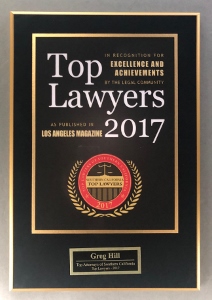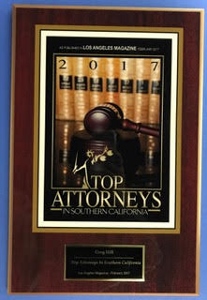What Is a Penal Code § 995 Motion under California Law?
In any felony case, there is often a discussion by defense counsel of a “995 Motion.” What is this motion? What is it for? Why do most attorneys believe it is an important motion to file? When is it filed?
The Reader’s Digest Version: A 995 motion is filed after the preliminary hearing to ask a judge to dismiss an allegation, a sentencing enhancement or a special circumstance allegation based on the transcript from the preliminary hearing.
A motion under Penal Code § 995 is known as a “995 Motion.” It asks a judge to dismiss the whole or just parts of an information (the criminal complaint after a preliminary hearing) when the judge at the preliminary hearing in the matter failed to do so. People v. Hudson (1917) 35 Cal.App. 234, 237.
 Entrance to Torrance Courthouse
Entrance to Torrance CourthouseFrom our experience, we think filing such a motion serves a practical purpose in two ways, but must be done carefully. When a judge in the court handling the preliminary hearing truly made a mistake in denying a motion to dismiss, a 995 motion seeks to correct that error under the court’s inherent power under Penal Code § 1385 in the furtherance of justice.
Secondly, the motion can educate the new judge about the case facts, the weakness of the evidence and issues that are dispositive. However, this should never be the sole purpose of the motion. If this were the sole purpose of the motion, without a good faith argument that certain one or more charges or enhancements should be dismissed, the court may regard the motion as frivolous, hurting the client’s credibility and our credibility, too.
The motion is based upon the transcript from the preliminary hearing transcript (or grand jury transcript). Booth v. Superior Court (1997) 57 Cal.App.4th 91, 99-100 [and cases cited therein]. In other words, the police report cannot be cited.
To issue a holding order, meaning that the case continues beyond the preliminary hearing, the judge does not need to hear sufficient proof to sustain a conviction. The standard of proof is reasonable or probable cause, not proof beyond a reasonable doubt.


This is more than “common rumor or report, or even strong reason to suspect.” People v. Triggs (1973) 8 Cal.3d 884, 895; citing Henry v. United States (1959) 361 U.S. 98, 101). Reasonable probability has been defined as “having more evidence for than against; supported by evidence that inclines the mind to believe, but leaves some room for doubt [citations]. . . The test is not whether the evidence. . . is sufficient to convict but only whether the person should stand trial. People v. Ingle (1960) 53 Cal.3d 407, 413; see also Malleck v. Superior Court (1956) 142 Cal.App.2d 396, 399 [if the evidence shows it is as probable that defendant did not commit the crime as that he did, there is not probable cause and the charge must be dismissed].
This means that the record from the preliminary examination must raise a "clear and distinct inference of the existence of the essential elements of the crime charged." People v. McKee (1968) 267 Cal.App.2d 509, 515.
Reasonable or probable cause does not exist when the prosecution fails to prove an essential element of the crime charged in the information. Williams v. Superior Court (1969) 71 Cal.2d 1144, 1148; c.f. People v. Burnett (1999) 71 Cal.App.4th 151. It also does not exist when the holding order is based upon incompetent or inadmissible evidence. People v. Scoma (1969) 71 Cal.2d 332, 335, People v. Valenti (1957) 49 Cal.2d 199, 203 [illegally seized evidence]; Whitman v. Superior Court (1991) 54 Cal.3d 1063, 1083 [hearsay].
As to Whitman, we caution the reader that hearsay is allowed in a preliminary hearing when a police officer is qualified to testify thereto. Therefore, it would be error to file a 995 motion if it were based upon hearsay that a qualified police officer offered at the preliminary hearing.
For more information about dismissal of charges for various types of crimes by motion, click on the following articles:
Dismissal of Forgery Charges Reversed Although Defendants Impersonated No One During Scheme
Domestic Violence Case Filed in California Dismissed Because Acts Took Place in Hawaii
 Greg Hill & Associates Home
Greg Hill & Associates Home




















